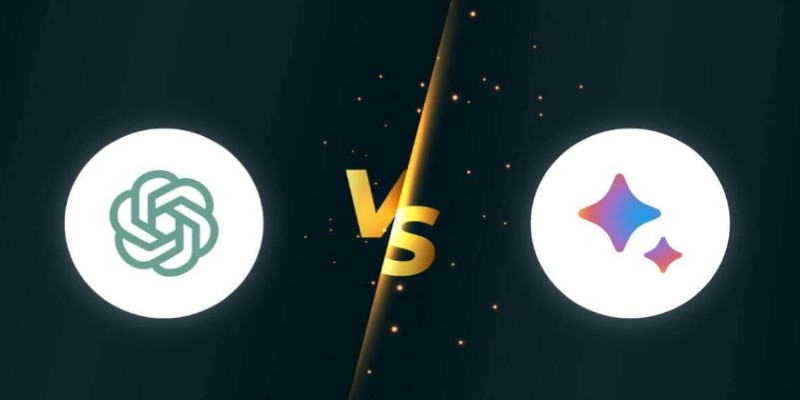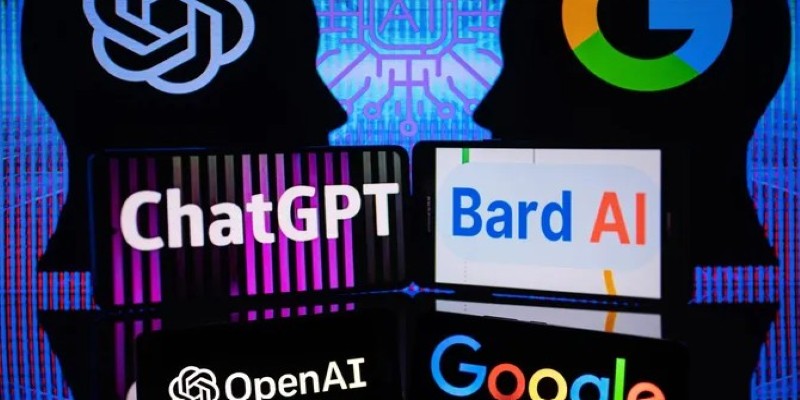Advertisement
The idea of asking questions and getting instant, smart answers is no longer a novelty. Two names dominate this space today: ChatGPT and Google Bard. Both are AI tools built to help with writing, researching, problem-solving, and more. They respond in natural language, adjust to tone, and can hold conversations that feel surprisingly human. But which one actually does a better job? Let's look beyond the buzz and see how they stack up against each other, side by side, task by task.
ChatGPT is made by OpenAI, and Bard is Google's version. On paper, both serve the same function. You type something in; they give you a well-formed answer. But how they get to that answer—and what it feels like to use them—is where things start to differ.
ChatGPT is trained on a mixture of licensed data, public data, and large-scale web data. What makes it stand out is how it handles conversations. It remembers your questions within the same thread, picks up on your tone, and shapes responses that can be playful, formal, or simple, depending on what you’re looking for.
Google Bard, on the other hand, pulls directly from the web in real-time. It works more like a supercharged search engine and reflects Google’s typical style—factual, polished, and structured. It leans toward giving brief summaries, links to sources, and an overall cleaner, more straightforward look.
So while both are chat-based AIs, one behaves more like a writing assistant and the other like a research helper.

This is where it gets interesting. The same question asked of both tools often brings very different results.
ChatGPT tends to come across as more conversational. If you say, “Write me a fun story about a cat that goes to school,” it may throw in jokes, unexpected plot twists, or even ask if you'd prefer a happy or dramatic ending. Bard’s version will likely be shorter, simpler, and more direct. It may even include a short blurb at the end, asking if you want more information.
In short, ChatGPT feels more like talking to a human. Bard feels more like reading a summary from a well-organized document.
Ask a complex question—like how quantum computing works or what ethical issues surround AI in hiring—and ChatGPT tends to give a longer, more thoughtful breakdown. It uses examples, compares views, and even explains tricky words. Bard, while factually accurate, keeps things brief. It may list bullet points or offer a paragraph or two and then refer you to a link.
This makes ChatGPT better suited for learning something in depth. Bard is helpful if you're in a hurry and want the top-level facts.
Depending on what you need, your preference may shift.
If you need help writing—whether it’s a blog post, a cover letter, or creative content—ChatGPT stands out. Its responses tend to flow better, carry more emotion or wit, and feel more human. It’s easy to guide: you can say, “Make it more casual,” and it will adjust.
Bard can write too, but its outputs are more formulaic. They're good for filling in templates or summarizing content, but they often lack the flair that makes writing enjoyable to read.
Bard pulls info directly from Google Search. This gives it an edge when looking for real-time updates, like stock prices, sports scores, or something that just happened today. ChatGPT, depending on the version, may not have access to the latest data unless browsing is enabled.
So, for current events or live data, Bard is usually more accurate. For anything else—especially things that don’t change day to day—ChatGPT handles it better.
Try asking either of them to explain how to bake bread or create a budget. ChatGPT usually breaks the answer down into neat steps. It anticipates the next thing you might ask and adjusts its language based on your level of experience. Bard often gives a quicker overview and may not include as much detail unless you prompt it multiple times.
ChatGPT is more dependable for guided tasks where you want the AI to walk you through something.

It’s not just about the answers—they also differ in how they feel about using them.
ChatGPT has a clean chat layout. You can keep all your previous conversations, and it remembers the thread, which makes it easy to build on past questions. It doesn’t show you sources by default, but you can always ask where the information came from.
Bard has a more web-like interface. It gives you multiple versions of a response that you can switch between. It often includes links to sources, which is useful if you want to double-check or read more.
One feels more like a conversation. The other feels more like a smart version of Google Search.
If you're looking for in-depth help, thoughtful responses, and writing that sounds like a real person, you'll probably find ChatGPT more satisfying. It adapts better to your tone, follows instructions with more accuracy, and makes the experience feel personal. If your focus is on speed, current facts, or quick summaries with sources, then Bard is hard to beat. It’s built to pull the freshest info from the web and keep it concise.
Neither one is better in every way—it depends on what you're doing. But if the question is which feels more like a helpful assistant who understands you, ChatGPT has the upper hand. If the goal is to collect links and get fast summaries, Bard wins that round. So instead of thinking about which is "better," the real question is: What do you need help with today? Use that to decide. Both tools can be useful, just in different ways.
Advertisement

How to build a detailed topographic map of Nepal using Python, open-source libraries, and elevation data. A hands-on guide to terrain mapping and hillshading techniques

Understand how mixture-of-experts models work and why they're critical to the future of scalable AI systems.

Discover how AI boosts business growth by improving efficiency, decision-making, customer experience, and driving innovation

Explore the features, key benefits, and real-world use cases of ERP AI chatbots transforming modern enterprise workflows.

Discover how a steel producer uses AI to cut costs, improve quality, boost efficiency, and reduce downtime in manufacturing

Want to launch surveys quickly? Learn how Survicate lets you create and customize surveys with ease, collecting valuable customer feedback without hassle

Discover how Service now is embedding generative AI across workflows to enhance productivity, automation, and user experience

Trying to choose between ChatGPT and Google Bard? See how they compare for writing, research, real-time updates, and daily tasks—with clear pros and cons

Want to run Auto-GPT on Ubuntu without Docker? This step-by-step guide shows you how to install Python, clone the repo, add your API key, and get it running in minutes

Need smarter workflows in Google Sheets? Learn how to use GPT for Sheets and Docs to write, edit, summarize, and automate text with simple AI formulas

Learn how to build a machine learning model in 7 easy steps, from defining the problem to deploying the model.

Boost your productivity with these top 10 ChatGPT plugins in 2025. From task management to quick research, discover plugins that save time and streamline your work